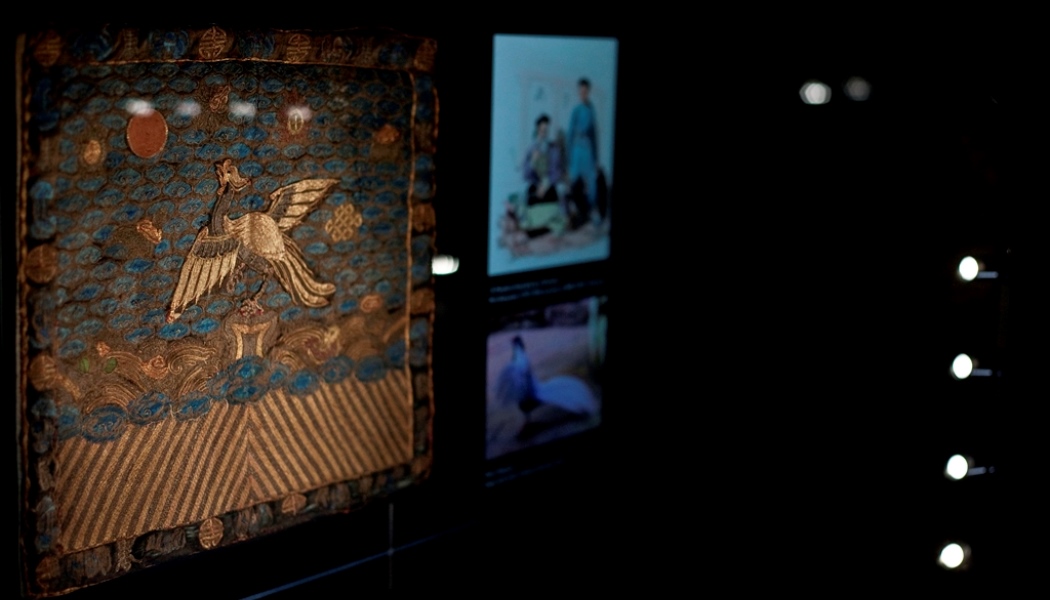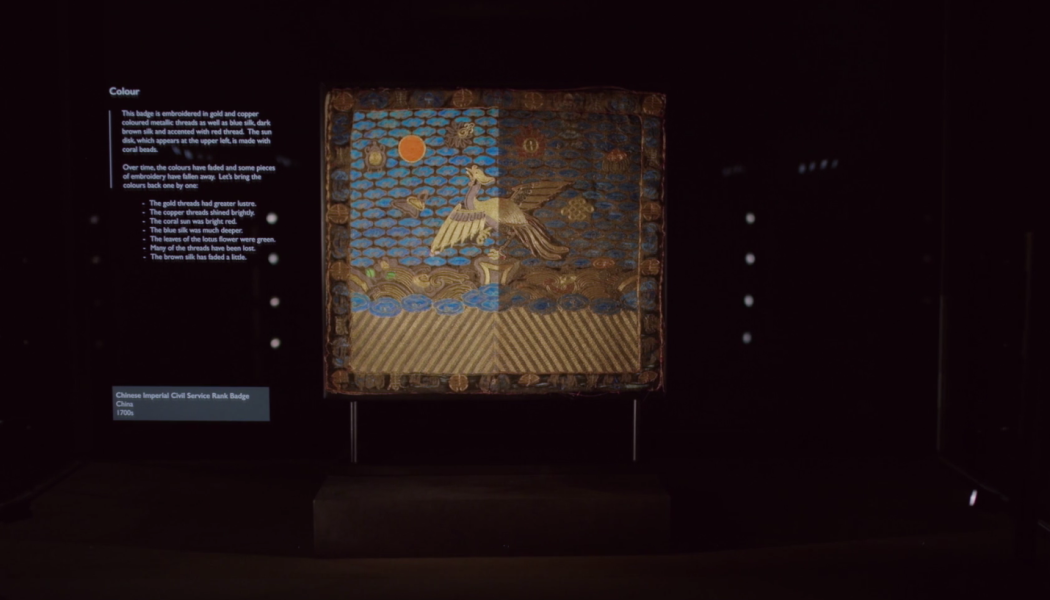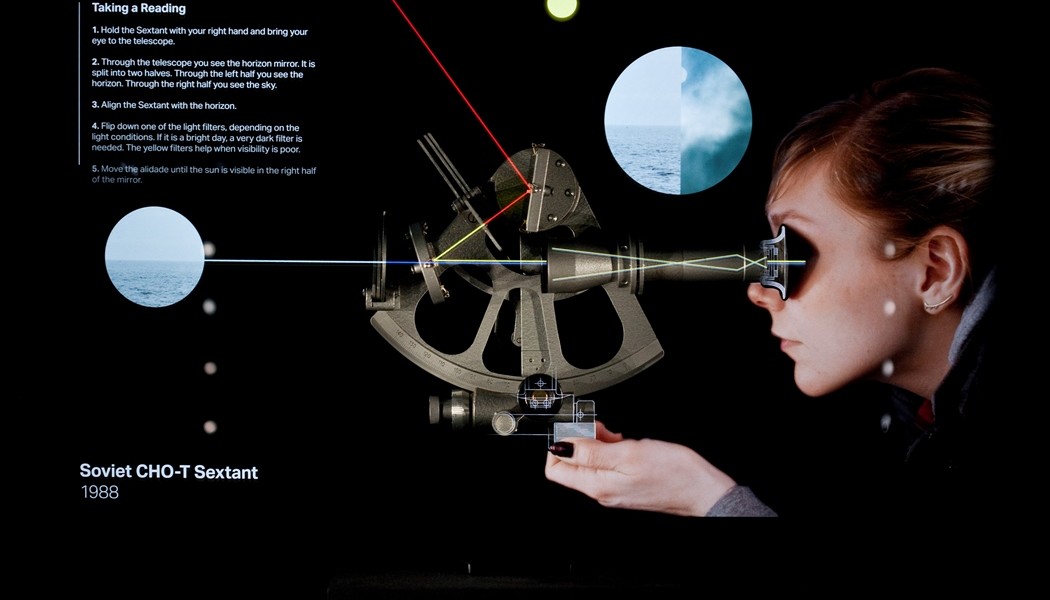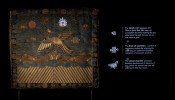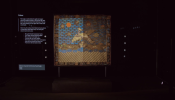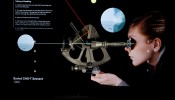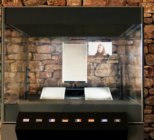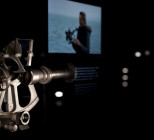The ColliderCase system has been specifically designed for museums and presents hologram-like text, animations, illustrations, and video inside the case next to and even crossing through a real object. Gone are interpretation boards and separate videos on museum walls as the new display cases are self-contained exhibitions.
The cases are particularly useful to museum professionals who want to tell intimate and detailed stories about a specific object in an engaging way. By having a real object inside the case and the means to use virtual illustrations over and around it the ColliderCase can, for example, show a real 2,000-year-old object with digital augmentations that restore it to its original condition.
ColliderCase is the creation of Virtual Case Systems, a new company founded by award-winning interpretive designers Bright White Ltd and d3t Ltd. d3t are a group of professional developers with experience over an array of digital software development platforms and software system integration. They have previously collaborated with Bright White on the BattleGame at Battle of Bannockburn Visitor Centre and the interactive Holocaust Survivors at the National Holocaust Centre.
“We have built ColliderCase specifically for the museums industry based on 20 years of experience of interpretive design in the UK museums industry. d3t bring cutting edge technologies from the world of computer games and the internet of things to the cultural sector via designs by Bright White.”, says Chris Walker, a Virtual Case Systems founder and managing director of Bright White.
It’s really important to understand that ColliderCase has not been designed by technologists but by museum designers who are working in the industry. We know how our museum clients work, the tools they need, and what will work for them that they don’t have right now
Normally, digital media is banned from showcases because the electronics can detrimentally affect the conditions inside the case and potentially damage an object or artefact irreparably says Walker. So Virtual Case Systems designed the ColliderCase to overcome this obstacle by using a special optical system to completely avoid these problems to open-up new possibilities for real objects and digital media to meet on the same stage.
“We have always noticed that object-led interpretation and digital interpretation (like The Battle of Bannockburn) can sometimes be thought of as different spheres within the industry,” says Walker. “We have been developing ideas that could bring those spheres together.”
But what could be a game changer is the specially devised Control Centre, which gives curators the option to define audiences and deliver specific content to them, such as providing more accessible text to a younger audience or to give special interest visitors a more advanced text.
As part of the make-up of ColliderCase there is an Audience Targeting section, where users can define the sector and means of identification (e.g. face detection or by tags) and then link the content to that audience. Separately, audience engagement is automatically monitored and analytics are derived from detailed and continuous data collected when each and every visitor views an object in a ColliderCase.
The following measurements are automatically taken:
Visits
Unique Visits
Engagement time (How long a visitor looks at the object or content)
Party Size
Age
Gender
This data builds up over days, weeks and months and throughout the life of the exhibition and the Control Centre has powerful query tools to be able to look at the data in different ways.
“The Analytics section helps you to keep track of the performance of an exhibition to see if the audience is engaging with the displays in the way anticipated by the designers and museum. Curators will be able to determine if, for example, one case is failing to engage in the same way as the others,” says Walker. “Curators will be able to spot this straight away and easily modify the interpretive content, as redeploying edited content is a simple and quick procedure, making sure each gallery is working as hard as possible to give best value.”
ColliderCase is designed to be useful for media producers within the industry – graphic and media designers can create content using their choice of tools that they know and love, and the Control Centre allows curators to preview sequences before they go into the case. Sequences are published over-the-air from the same Control Centre tool.
“We recognise that it is new, different and bold but we have gone all out on quality,” says Walker. “The visitors will not be aware of the technology and no one will be asking about the resolution or 3D elements as the technology is transparent. But for the curator the technology allows you to do what you couldn’t do before.”
Walker says he sees permanent, temporary and touring exhibitions as equally relevant to the new technology as it is a platform that programme managers and curators can use to rotate the collection with ease, and always keep the interpretive content with the object inside the case. It will be easy to loan content along with objects. As well as this, individuals can work remotely as part of a team and update content wherever they are in the world.
“It’s really important to understand that ColliderCase has not been designed by technologists but by museum designers who are working in the industry. We know how our museum clients work, the tools they need, and what will work for them that they don’t have right now.”
ColliderCase creates new possibilities for interpretative planning, design and evaluation. It is possible to see whether the theories taken forward at the planning stage of an exhibition, regarding interest in given items or topics, actually hold up in reality. “If data is collected across a wide number of ColliderCase systems, then deeper comparative insight will be available,” says Walker.
But it is the flexibility of the ColliderCase that will be of the utmost advantage to curators who can change the length of text, number of images, length of media sequences and complexity of story during an exhibition and all can be objectively assessed and even experimented-with.
“Perhaps some people on the team postulate that 7 minutes is too long for a video aimed at nine-year-olds – take a look at the engagement time for that case to see if that age range really did move on to another display before 7 minutes was up,” says Walker. “If they did, next time make a shorter film and save money. For the first time, it will be possible to actually put hard data behind all the rules-of-thumb and inherited knowledge that exists among professionals. That is a an example of a long-term response, but ColliderCase also allows you to make quick, cheap changes that you can implement right away, and keep an eye on engagement to check that it is working as you need it to. ”
In permanent exhibitions, the curator has the opportunity to interpret objects in ways not possible before – they can highlight, interact with, animate or point to parts or features of an real object – whereas any interpretation before was presented on nearby panels or screens.
“First and foremost it’s highly engaging, really powerful and flexible. Then we can record the engagement through a sensor and register audience engagement,” says Walker. “Second – it’s about the use of space because all the interpretation happens inside so case designers can use architectural space much more efficiently and cleanly.”
“We can show that, for star object display and interpretation, ColliderCase is no more expensive than using traditional interpretive techniques,” says Walker.
The ColliderCases come in different sizes and include a suite of practical software and analytical tools and in doing so set a new benchmark for display and possibly exhibition design in one fell swoop.

